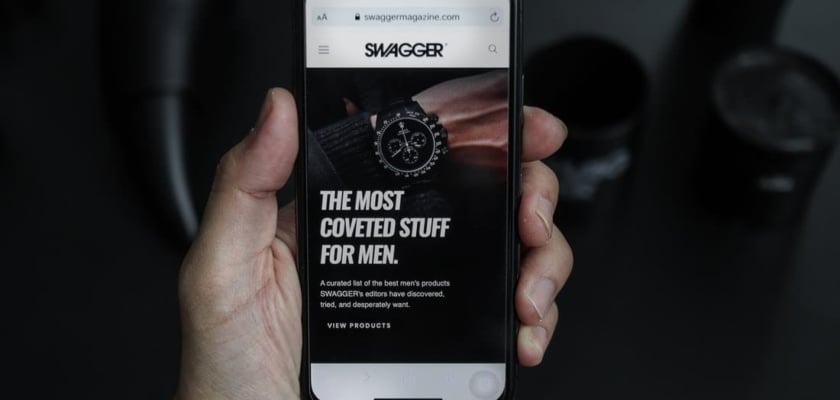How to Build a Post-Super Bowl Customer Experience

It’s the annual events that inspires creativity at a high cost. Make sure all of that investment proves worthwhile by bolstering a holistic post-game customer experience.
This Sunday, football fans across North America will gather around big screen TVs to watch the San Francisco 49ers and the Kansas City Chiefs go head to head over the claim to fame at Super Bowl LIV. As the culmination of the 100th official season of the NFL, sponsors are betting on viewership numbers of 100 million and above.
Since this is the centennial season of the NFL, those estimated viewing numbers are healthy assumptions. This is one of the reasons why advertisers are paying, on average, $5.6 million for a 30 second spot. Nine figure viewership numbers provide brands massive reach and visibility, and as the old saying goes – you gotta pay to play.
Is Super Bowl advertising a good investment?
For brands that can spare the budget, Super Bowl advertising is always great for reach and visibility. However, as more and more CMOs are asked to prove their worth with customer loyalty and lifetime values, “reach” doesn’t always translate into revenue.
Take, for example, the “Lost Dog” ad aired by Budweiser in 2015 during Super Bowl XLIX. The ad generated over 19 million views on YouTube prior to game day, and it also earned over 240,000 mentions on Twitter over the 24 hours that followed the Super Bowl. However, according to Allen Adamson, chairman of brand-consultancy firm, Landor Associates, there was a massive disconnect between the content of the ad, and the product sold by Budweiser – beer.
If there’s no brand recall, there’s no brand loyalty or affinity. Customers aren’t willing to buy products from brands that they lack strong feelings towards. Without the ability to stir passion within the hearts of consumers, sales funnels dry up and revenue numbers drop off.
None of this is meant to discourage Super Bowl advertising. What this should serve as is a wake-up call to become more forward-thinking with how your brand connects with customers at the height of Super Bowl fever.
How can you elevate the post-game customer experience?
The challenge with Super Bowl advertising is that, once a commercial airs, the affiliation with the viewer comes to an end not long after the big game is over. From a strategic business perspective, that’s unreliable activity and makes it challenging to claim real dollars with that (potential) behavior.
The objective of any brand in 2020 is to reinforce the customer journey across multiple channels. That means providing a viable path to your business post-game, which is where you can translate hype and emotion towards your ads into sales and revenue. Tapping into that emotion is imperative to success. Harvard professor Gerald Zaltman says 95% of purchasing decisions are subconscious, triggered by underlying feelings towards brands.
A Super Bowl commercial that airs on TV is just one channel to connect with audiences.
- Have you thought about a follow-up experience on OTT devices?
- Are you leveraging social media as a touchpoint?
- Did you engage users in-the-moment via push notifications?
- How is email and content factoring into your long-tail strategy?
Omni-channel marketing means creating consistent touchpoints for consumers on any potential channel where they may engage with your brand. The key term is “consistent.” People connect to brands on any number of platforms and devices–and a disjointed experience will send them running straight to your competitors’ doorstep. You might as well have flushed that $5.6 million down the toilet.
What if you don’t have an ad in play for the game?
Some brands will not have an ad of their own broadcast at any point on Super Bowl Sunday. Instead, they plan more of an experiential method of connecting to customers prior to, during, and following the big game.
Pizza Hut
One of the official sponsors of the NFL, Pizza Hut is sending drivers and delivery people on the ground to Miami for the weekend. Branded vehicles will be driven across the city in an attempt to deliver 30,000 free pizza slices to help fans get into the spirit of the game.
Presumably, the brand will exchange slices in return for contact information from people who accept the free slices. Those points of contact will enable Pizza Hut, as a brand, to forge long-term relationships with those people. They can build nurture programs that are tailor-made for Super Bowl slicers. Over time, the brand can increase the lifetime value of each individual customer with highly targeted promotions and offers.
Visa
Visa is following a similar blueprint, but with a few twists. For one, they’re bringing in brand ambassador Saquon Barkley, running back for the New York Giants and 2018 NFL offensive rookie of the year.
Secondly, Barkley will serve as more than a spokesperson. He plans to demo Visa’s contactless payment cards to drum up interest in the products. Strategically, this is a great business decision that allows Visa to leverage Barkley’s celebrity status while showcasing one of their new product lines.
Rolling Stone
Like the others, Rolling Stone will host its own on-the-ground event in Miami. They intend to host a beach party headlined by Ciara, DJ Khaled, and Paris Hilton in order to help attract people to the show.
The event is also being sponsored by several brands. Most prominently, Rolling Stone is teaming up with motorcycle brand Can-Am, and will devote published content in their magazines towards the relationship between music and motorcycles.
How technology builds a post-game customer experience
Once the hype of the big game comes to an end, the direct connection between ad sponsors and their viewers ends as well – unless, something is done to maintain the relationship post-game. That’s where brands can leverage technology to promote highly targeted content across a variety of channels.
This cross-channel customer experience is the best way to keep viewers engaged with the brand, and increase the likelihood of converting them into paying customers. Here are a few tips and best practices.
- Mobile push notifications
This isn’t really a new technology, but it is one that has rarely been used in a meaningful way. Suppose, for example, your site or app receives a high volume of traffic on a daily basis. In the hours and days following the Super Bowl, it’s natural to anticipate an even greater spike in traffic due to the hype of your commercial.
Taking that a step further, it’s likely that you will be attracting both new and existing customers, as well as an audience from many different age ranges, locations and lifestyles. Imagine if you had created a unique offer tied to the Super Bowl commercial you just aired–and based on their customer status, location, demographics etc–pinged to their mobile device in-the-moment. That sounds a whole lot more engaging than just watching a passive commercial while they stuff their faces with pretzels and beer.
Using push notifications, combined with user targeting and segmentation, you can easily send customized messages that inspire them to act. The messaging you include in that notification should thematically align with the content of the Super Bowl commercial to remind the consumer of what brought them to your site in the first place. This is an excellent way to bolster that relationship and to spur on additional engagement with your brand.
- Experiment with OTT
Over the top (OTT) has been on the rise for several years. This is a direct byproduct of the development of platforms such as Apple TV, Roku, Amazon Fire and the rising amount of cord-cutting within households across the world.
Even better, these platforms allow passive commercials to become active stints of content targeted at highly relevant and engaged audiences. In the days following the big game, leveraging this powerful platform to continue the storyline will more likely incite action for relevant consumers.
If they re-engage with the commercial, tie that activity to a campaign of related video content that keeps them engaged with the account. The goal of the Netflixes, the Disney+, and even newer platforms like YouTube TV or IGTV is to keep viewers in their accounts for longer periods of time. Targeted ads and preview content that enlighten their minds to similar content are a great way to trigger that activity and motivate them to spend more time with your brand.
- Targeted, Relevant Email
Email isn’t dead. But email for the sake of sending email, is. Develop personalized nurture campaigns based on, not just the story you told around the Super Bowl, but the activities of your audience. The reality is consumers want to get email and messages that help them discover new shows, products or offers they didn’t already know about. TLDR; don’t just copy/paste from your Super Bowl commercial–give them a personalized message that inspires action.
Use your web analytics platforms to determine new or returning users prompted to visit your website following the Super Bowl. Make a logical assumption that the commercial triggered that activity and that related content will motivate similar engagement with your brand. If you have their email addresses on file, or can motivate them to hand over their email in their post-Super Bowl browsing experience, you can build a long-term connection with those consumers.
After all, long-term relationships are the most rewarding. In the world of business, those are the relationships that translate into revenue.
